Home Alone
Home Alone
As I sat down to watch this cartoon rendition, I was reminded of the cheerful chaos that the McCallister household represents.
Walking into “Home Alone” isn’t just about revisiting an old story; it’s a journey back to childhood itself. As I dove into the animated version, the storyline felt both fresh and familiar. The animation breathes a different life into the narrative, shedding new light on characters we’ve known for years. While the iconic house traps and youthful resourcefulness are present, the cartoon takes creative liberties, offering renditions that only animation could deliver.
History and Conceptualization
Initially introduced as a live-action feature in 1990, “Home Alone” became a cultural phenomenon almost overnight. Its simple premise – a young boy left to fend for himself during Christmas – was the perfect backdrop for a blend of humor and adventure. The animated series, taking cues from this beloved film, explores the very heart of what it means to be “home alone” but does so in a way that feels expansive and inventive.
What struck me most was how the animation managed to capture the original's spirit while introducing elements of whimsy and exaggeration. It's fascinating how the production transitioned from the screen to the animated world, retaining the essence yet experimenting with style and mood. This history of transformation speaks to the timeless allure the story holds, allowing new interpretations to emerge.
Why "Home Alone" Captivates
Throughout its duration, "Home Alone" masterfully intertwines the notion of adventure with the innocence of childhood. This balance is pivotal to why it captivates audiences even today. The animation uses vibrant colors and dynamic sequences to engage not just children but adults as well, who remember the original movie fondly. Watching the mischievous antics of Kevin McCallister unfold in animated form brings a form of glee that rekindles the sense of wonderment.
The cartoon doesn't just retread old ground; it enhances the story with new visual elements and storytelling techniques that animation affords. From the exaggerated traps to the whimsical backgrounds, each frame is meticulously crafted to draw the viewer in. The humor feels more pronounced, with slapstick moments finding a perfect home in this medium.
My Impressions
As I watched this animated version, I found myself frequently chuckling and nodding in appreciation. One significant aspect that stood out was how the animation amplified the McCallisters' vibrant chaos, making it both endearing and relatable. Kevin's character, brimming with curiosity and bravery, felt more alive, thanks to expressive animations that captured his endless energy.
The heartwarming elements are accentuated as well. Watching the family reunited with Kevin brings an unexpected depth, tugging at heartstrings in a way that only care-filled animation can. It’s an impressive feat, maintaining a balancing act of humor and warmth, making it just as pleasing for old fans as it is welcoming for new ones.
Musical Scores and Soundtrack
The soundscape shaped by "Home Alone" is worth noting. In animation, music becomes an integral part of storytelling, and this cartoon does not disappoint. The familiar melodies from the original film are woven through new, lively compositions that augment the animated chaos beautifully. This symphony of sound keeps the audience engaged and heightens emotional responses.
The scores often propel the narrative, enhancing chase scenes and underpinning quiet moments with gentle notes. It’s a testament to the power of a well-curated soundtrack in animation – breathing life and setting the tone without overshadowing the visuals.
Character Development
The character development in this animated rendition is aptly designed, keeping in mind the original audience while expanding on personas and backstories. Kevin's ingenuity and resourcefulness are presented in even more creative ways, with an exploration of his inner world that feels both genuine and delightful.
The antagonists, Harry and Marv, are afforded a more animated eccentricity, their antics rendered into exaggerated humor that fits the overall tone. This portrayal adds depth while keeping the appearance lighthearted and accessible for all viewers. Watching these characters come to life in animated form offers new perspectives on their motivations and relationships.
Visual Aesthetics
Animation opens a new dimension for storytelling, and in “Home Alone,” this is fully exploited. The vibrant palette used enhances the comedic urban landscape and Kevin’s adventures. The exaggerated perspectives and whimsically distorted scenes exemplify what animation can bring to a table otherwise restricted by live-action sequences.
This creative freedom allows the show to explore surreal scenarios that could be implausible in its original format, such as imploring visual gags that entertain and captivate. Additionally, the artistic style speaks volumes, giving audiences a fresh lens through which to enjoy a classic.
Dialogues and Writing
Revisiting the screenplay in animated form, the dialogues are sharp and filled with humor that appeals across generations. I noticed the charming wordplay, which felt even more engaging when delivered through animated characters. The writing manages to strike a delicate humor that entertains without derogation, a quality often hard to achieve.
Kneaded into this humor is a sprinkling of heartfelt moments, especially through Kevin's monologues and interactions with his family and foes. These dialogues serve to create an inviting aura around the character, making his playful universe even more immersive.
Contrast with the Live-Action
A major portion of my intrigue stemmed from contrasting the animated version with its live-action counterpart. The original film, with its tangible feel, portrayed realism within its fantasy, while the cartoon takes liberty with exaggerations and imaginary embellishments. This variation renders each viewing experience distinct and enjoyable.
The animation fleshes out aspects not touched by the live-action, providing broader horizons for imagination. The playful approach allows different kinds of jokes, creating a divergence that refreshes the story for those familiar with the original film.
Impact and Cultural Presence
“Home Alone” has cemented its status in pop culture, and this animated version further entrenches this. Its reach and influence span generations, marking a beloved point of seasonal celebration with its playful antics and warm messages. Watching this adaptation, I couldn’t help but notice the nostalgia it invokes, transporting viewers back to moments of childlike delight.
This iteration has found its niche as a holiday staple, offering families a chance to bond over laughter and whimsical adventure. Its presence reminds us of the joy in simplicity and the warmth of family, all clad in a vividly animated wrapping.
Target Audience
Targeting audiences young and old, this cartoon bridges the age gap, presenting a narrative easy to digest no matter the viewer’s background. While the slapstick humor and vibrant colors naturally appeal to children, the cleverly inserted nuances and nostalgic nods draw adults in as well.
This dual appeal ensures that the cartoon rests comfortably within family entertainment, maintaining engagement across ages and allowing different perspectives on age-old stories to blossom through fresh eyes.
Themes and Messages
At its core, "Home Alone" weaves essential themes about family, ingenuity, and independence; themes skillfully retained in the animation. Each episode and sequence speaks to the resourcefulness children possess and the unwavering bonds of family, making it both an entertaining and didactic experience.
These messages resonate well, instilling values of resilience and adaptability while wrapped in humor and play. The depiction reminds us of the importance of family, optimism in adversity, and the childlike wonder that remains in all of us.
Animations Technique
Technically, the animation in “Home Alone” proves to be exceptional, characterized by fluid movement and detailed backdrops that complement the narrative. The quality here serves as a robust platform on which the story thrives, delivering seamless transitions and lively sequences.
Often, it’s these little technical aspects that breathe life into characters and settings, and the creators have taken care to ensure each storyboard and scene transitions beautifully, making it a visual treat.
Final Thoughts
In conclusion, the animated version of “Home Alone” serves as a vibrant companion to its live-action predecessor, adding newer dimensions to an age-old favorite. While keeping the heart of the original intact, it opens doors to explore broader artistic and thematic horizons.
As I finished watching the series, the feeling was one of satisfaction and delight, akin to meeting an old friend in new attire. This cartoon truly combines nostalgia with innovation, creating a delightful viewing experience that renews and celebrates the magic of being home alone.
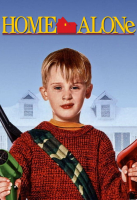

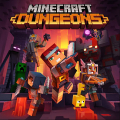






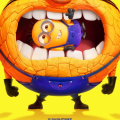
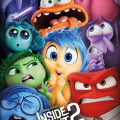





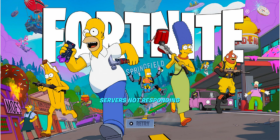
Leave a comment
Your comment is awaiting moderation. We save your draft here
0 Comments